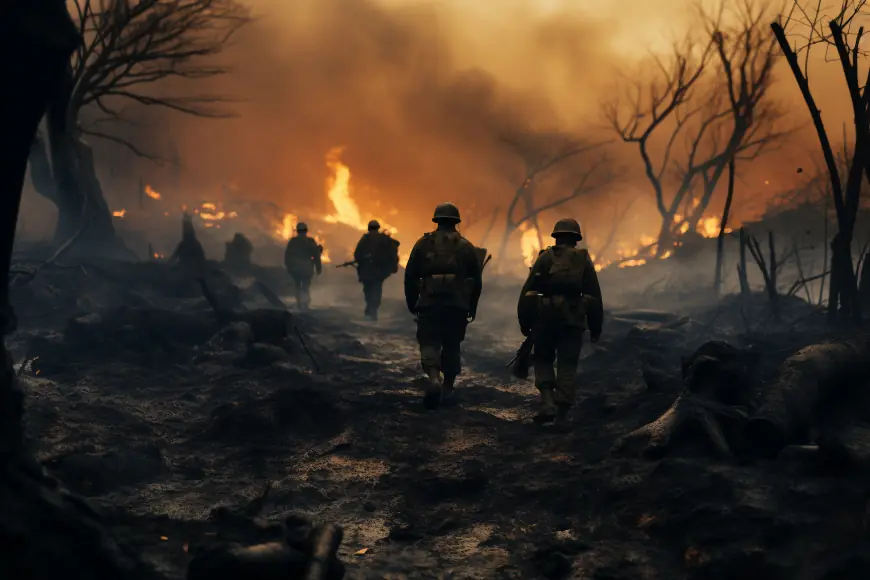New Cold War Challenges and Possibilities
Explore the New Cold War, its global challenges, China’s rise, peace possibilities, and paths toward cooperation instead of conflict.

Dee Knight’s Blog shares powerful stories, ideas, and news about peace, justice, and fairness around the world. Today, we look at the New Cold War and its meaning for global politics. This conflict shapes policies, alliances, and even humanitarian issues like the Gaza famine. Understanding it helps us see why peace must remain a priority.
Understanding the New Cold War
The New Cold War is often compared to the U.S.-Soviet rivalry. Yet today’s struggle looks different. A key factor is China’s rise as a global power. China’s economic strength challenges U.S. dominance, sparking competition in technology, trade, and security. This contest influences global debates, from military spending to how nations cooperate.
China’s Rise in a Divided World
The New Cold War highlights deep divisions in global politics. At the center of it stands China’s rise, with its rapid growth reshaping global trade and diplomacy. Unlike in the past, China pushes for influence without direct military conflict. Its policies focus on partnerships and development projects. This creates pressure on the United States to rethink strategies and alliances.
Befriending China for Stability
In the New Cold War, many voices stress the importance of befriending China. Building trust reduces risks of conflict and promotes cooperation. Diplomacy can open doors to solutions on climate change, global trade, and humanitarian issues. By seeking dialogue instead of rivalry, nations can ease tensions and work toward stability.
A Realistic Path to Peace Amid Tensions
The New Cold War makes it urgent to search for alternatives. A Realistic Path to Peace calls for diplomacy, fairness, and mutual respect. Instead of weapons races, leaders should prioritize dialogue. History shows that trust and cooperation often prevent large-scale conflict. Peaceful policies also allow countries to invest in health, education, and shared growth.
Humanitarian Lessons from Gaza Famine
The New Cold War connects indirectly with humanitarian crises. For example, the Gaza famine reveals the human cost of political conflict. While major powers compete, ordinary people suffer hunger and loss. Global cooperation is necessary to solve such crises. If superpowers focused on humanitarian aid instead of rivalry, the world could move closer to lasting peace.
China’s Rise and Shifting Global Power
The New Cold War reminds us that global power is shifting. China’s rise impacts trade networks, energy supplies, and security alliances. Some nations welcome this change, while others fear instability. Understanding these dynamics is crucial for avoiding reckless policies. Dialogue with China can balance competition and cooperation, creating space for shared progress.
Befriending China in a Polarized Era
The New Cold War divides nations into blocs, yet befriending China could break barriers. Engaging China with respect can strengthen international stability. Policies of hostility deepen mistrust, while cooperation offers hope. Partnerships in science, culture, and trade can ease political divides and encourage collaboration.
A Realistic Path to Peace and Global Responsibility
During the New Cold War, pursuing a Realistic Path to Peace demands global responsibility. Leaders should resist pressure for endless rivalry. Instead, they must address climate challenges, poverty, and displacement. These problems require cooperation across borders, not more divisions. Peaceful solutions strengthen international institutions and reduce the risk of global war.
Gaza Famine as a Global Wake-Up Call
The New Cold War often distracts from urgent crises like the Gaza famine. This tragedy shows how politics blocks aid and deepens suffering. Nations must realize that humanitarian concerns cannot wait for political solutions. Working together, even during rivalry, is possible and necessary to save lives. The famine is a reminder that human dignity should stand above power struggles.
China’s Rise and the Future of Cooperation
The New Cold War can either divide or inspire cooperation. China’s rise should be seen as an opportunity to build balanced partnerships. Working together on energy, trade, and technology benefits all nations. Instead of treating growth as a threat, leaders should find common ground. Peaceful engagement is the only sustainable path forward.
Befriending China for a Shared Tomorrow
The New Cold War challenges trust, yet befriending China is essential for peace. Open dialogue builds respect and prevents unnecessary escalation. Cooperative policies help address shared concerns like climate change and economic stability. With trust, nations can replace rivalry with progress and security.
Realistic Path to Peace as a Global Vision
The New Cold War proves the importance of a Realistic Path to Peace. Peace is not weakness but strength. By choosing fairness over aggression, leaders can create stability. Diplomacy is less costly than war and more effective in solving global problems. A vision for peace ensures future generations inherit cooperation, not conflict.
Learning from Gaza Famine and Human Struggles
The New Cold War cannot overshadow human suffering. The Gaza famine illustrates what happens when politics blocks compassion. Millions need food, water, and safety. Nations must prioritize humanity over rivalry. By responding to crises together, superpowers can show that peace and compassion remain possible, even during global competition.
Conclusion: Building Hope Beyond the New Cold War
The New Cold War defines our era, but it does not have to define our future. China’s rise offers both challenges and opportunities. Befriending China can lead to stability and reduce risks of conflict. Following a Realistic Path to Peace gives nations a way to prioritize fairness and dialogue. And remembering tragedies like the Gaza famine reminds us that humanity should always come first. The choice before us is simple: rivalry or cooperation. The future depends on which path leaders take.
What's Your Reaction?
 Like
0
Like
0
 Dislike
0
Dislike
0
 Love
0
Love
0
 Funny
0
Funny
0
 Angry
0
Angry
0
 Sad
0
Sad
0
 Wow
0
Wow
0




















































